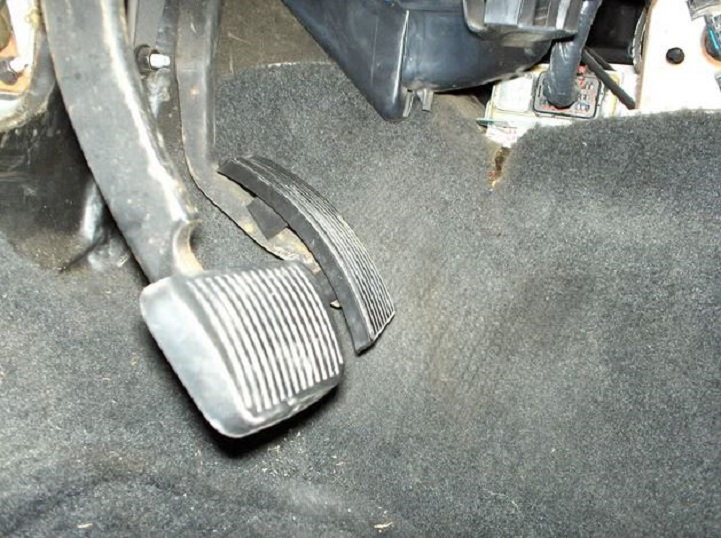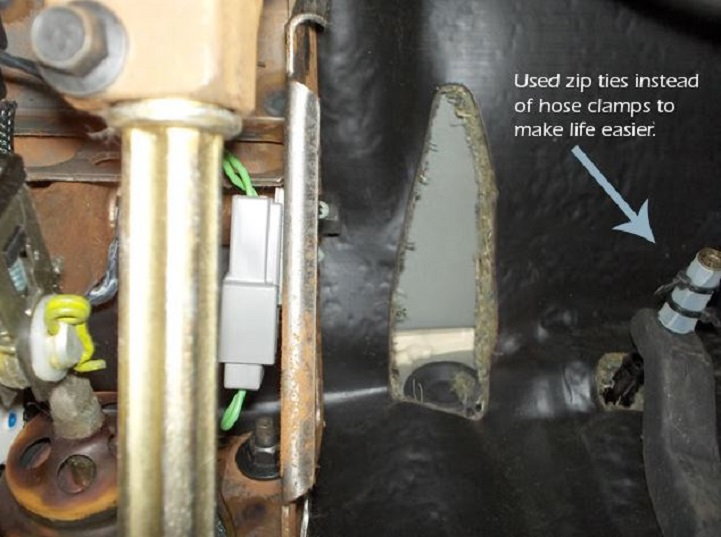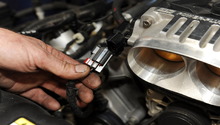Ford Mustang V6 1994-2004: How to Adjust Throttle Cable
The throttle cable on your '94 to '04 Mustang can be adjusted to give you the giddy-up and go you may be missing.
This article applies to the Ford Mustang V6 (1994-2004).
When you first sat in your Mustang with that feeling of awesomeness under your seat, were you a little let down when you stomped the gas? If so, you are in good company. For some reason, probably born out of safety considerations for the newbie owner, the throttle cable in your Mustang was left with about an inch or two of slack in it. This prevents you from ever achieving the wide open throttle response that sends waves of adrenaline through your soul. You can easily accomplish this task in a matter of minutes and finally get that feeling you've been looking for since you purchased your car. There are no special tools needed to do this, it will take only a few minutes of your time, and you don't need any extensive mechanical skills or abilities to do this job. You won't even need to pop your hood. Save yourself the money of having a pro do it for you when you can easily do it yourself and feel thrilled with your accomplishment.

Materials Needed
- 1-inch piece of plastic tubing to act as a spacer
- Zip ties or small, removable clamps
- Flat head screwdriver
- Razor blade or sharp utility knife
Step 1 – Prepare a spacer
You will need to find a small, thin plastic tubing that is pretty tough. The outer tube of a white, plastic Bic ink pen will work well for this project.
- Cut a length of the plastic tube anywhere from a half an inch to slightly more than an inch. This will raise your gas pedal the same distance, so it should be cut to whatever length you are comfortable with. This is an easy job, so cut several different lengths and give them each a try for comfort.
- Use a razor blade or utility knife to cut along the length of one side of your spacer.

Step 2 – Get under your dash
This is the most difficult part of the job. Getting yourself under your dash to gain access to the underside of your gas pedal is a very tight squeeze. Raise your steering wheel all the way to the top and adjust the driver's seat as far back as it will go. Some people actually recline the seat all the way back and lie on it upside down to get to the gas pedal.

Step 3 – Attach the spacer to the throttle cable
Once you are under the gas pedal, push up on it to see exactly how much slack is actually in that cable. It is surprising how much there is to work with. Split open the spacer just enough to slip it over the throttle cable and slide it all the way up until the end butts up against the end cap that holds the cable out from the throttle arm.

Step 4 – Secure the spacer in place
If you are going to test this with different sizes of spacers, you will save some time by using zip ties to temporarily hold the spacer in place. If the gas pedal sits too high or still too low, you can easily cut the zip ties off and start over with another length of spacer. Once you have the correct "feel" for you, permanently secure the spacer with the smallest hose clamp you can get. Secure the spacer with the host clamp on each end. Tighten it down with a flat head screwdriver as tight as you can. Make sure that it does not slip.

Step 5 – Take a test drive
Take care when you first take off. The pedal will be at a much higher height than it was before. Ideally, you should end up with the gas pedal raised even with the brake pedal. When you press the gas, you will have a lot more travel room than you had previously, so you'll need to adjust accordingly, unless the burn out is your game. Once you get into an open road, give it a good stomp. You should now have the traditional WOT you've been longing for. Your actual HP or gas mileage won't change unless you plan on driving everywhere with a WOT, which is not recommended outside of the track.

Related Discussions
- Full Throttle - 99-04 Throttle Cable Adjustment/Fix - MustangForums.com
- Loose Throttle Cable? - MustangForums.com
- Adjusting Throttle Cable? - MustangForums.com
- Throttle Cable - MustangForums.com






